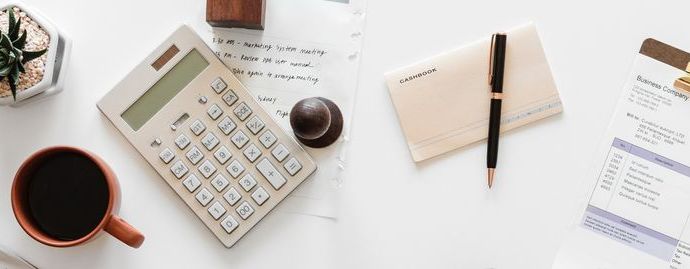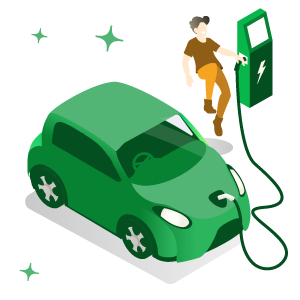What is Economy 7? The Complete Guide

If you’ve spent any time looking into saving money on your energy tariff, you’ll have heard of Economy 7, but you may not be entirely sure what it means. Used correctly, an Economy 7 meter could save you shed loads on home energy bills, but is it right for you? On this page, you’ll find all the information to decide for yourself.
What is Economy 7?
An Economy 7 tariff is one that charges one rate during the day and another, cheaper rate for a seven hour period during the night. You might also have heard it referred to as a ‘time of use’ or ‘differential’ tariff, as what you pay depends on when you’re using electricity.
You might be wondering who would care about their electricity being cheaper at night - why would you want cheaper electricity while you sleep? The fact is that Economy 7 most benefits people who are on electricity-only tariffs and own storage heaters. These are used to draw electricity at night when the rate is cheap and release it during the day when it’s needed.
What's the difference between Economy 7 and Economy 10?Though less common, some providers also offer Economy 10 tariffs, another time-of-use tariff. As you might have guessed, these tariffs work in the same way except in that they offer a cheaper rate for a ten hour period instead of a seven hour period during the night.
What are the times for Economy 7?
Economy 7 times can vary by provider, but you’ll usually be paying less between midnight and 7am.
Does Economy 7 still exist?
Yes, several UK energy suppliers still offer Economy 7 tariffs. We take a closer look into the market a little further down this page.
How do I know if I have Economy 7?
The quick and easy way to check you’re on an Economy 7 tariff is to check your bill. If you’re paying two rates, they will show up separately and you will have a reading marked ‘Day’ and another marked ‘Night’. Another way is to check your meter - if it’s an Economy 7 meter, it may show two readings one above the other for the different rates you’re paying.
If your bill is confusing and your meter is in an awkward position that doesn’t allow you to see if well, you can also just call your supplier and ask them. If your provider is a nightmare to get hold of, you can also give one of our energy experts a call on 020 3608 4293 and get help from a real human being without the wait.
Economy 7 meter

Do you have an Economy 7 meter and need help taking your reading? As you might expect, customers are required to provide two readings - one for the day and one for the night. Obtaining these readings essentially works the old-fashioned way, but there are two types of Economy 7 meter with slightly different displays to be aware of:
- Single display meter, with a single row showing only the daytime reading and a red button which you press to show the nighttime reading.
- Dual-display meter, showing the daytime reading at the top (marked ‘Normal’) and the nighttime reading below (marked ‘Low’).
The only difference with an Economy 7 meter in terms of sending readings is that you send both of these numbers to your provider in order to get an accurate reading on your bill. Other than this, there is no extra faffing around involved.
Economy 7 tariff
Many major providers now offer Economy 7 tariffs, though they’re not exactly keen to promote them or offer them to new customers. If you think you can make Economy 7 work for you, you’re best off getting in touch with your provider to find out if they offer one and how much you could save.
Generally speaking, the off-peak rate on an Economy 7 tariff will always be considerably cheaper than the same provider’s standard rates, but the peak rates will be more expensive.
The cheapest annual estimate that we could find for an Economy 7 tariff, however, is only marginally cheaper than the cheapest fixed-rate tariff - coming in at £534 a year compared to £538 a year for a fixed tariff, a saving of around £4… This seems hardly worth the hassle involved in using at least 40% of your electricity at night.
Advantages & disadvantages
This is about as simple as weighing up the options gets for us, with only one main advantage and one main disadvantage to consider as far as we’re concerned:
- If you keep at least 30% of your usage to off-peak hours, you will make some sort of saving on even the cheapest electricity tariff, as off-peak rates on Economy 7 tariffs are as cheap as they come.
- If you end up using most of your electricity during peak hours, you will be out of pocket. The biggest mistake you can make is not to adapt to an Economy 7 tariff after choosing it, as rates during peak hours can be extortionate and you could easily end up paying far more than you expected.

In short, the only disadvantage of Economy 7 comes when you don’t use it correctly and use it too often during peak hours. Our advice would be to check the rates you would be paying and which hours you would pay each of them - if you don’t expect to be able to use a significant proportion of your electricity during the off-peak hours, then Economy 7 isn’t for you.
The advantages of an Economy 7 meter are there to be enjoyed, however, if you make the most of it and adapt your usage to your tariff rates. In the following section, we’re going to give you some expert tips on how to do this without becoming entirely nocturnal.
Tips for saving with Economy 7
So it’s important to take advantage of your Economy 7 tariff, but how does one go about that? You can’t sleep through 17 hours of the day and wake up for the seven off-peak hours just because you’d be paying less for electricity (though may suit certain students down to the ground and would certainly save them money).
For those looking for a more conventional way to save with Economy 7, here’s a list of steps you can take:
1. Get yourself a storage heater
As we mentioned above, Economy 7 and storage heaters go together like two peas in a pod. To make the most of one, you’re best off getting the other as well. Storage heaters essentially work like a rechargeable battery, and charging them up at night while you’re on your off-peak rate to be used during the day is a great way to capitalise on your nighttime rate.
If you already own a storage heater, it’s also important you make sure you’re using it efficiently. This means making sure it isn’t releasing heat during the night as it charges. If yours is a manual storage heater, this means turning the output to its lowest setting (usually 1 on a scale of 1-6) before it’s set to charge during the night.
2. Check your off-peak times carefully
Economy 7 times will usually begin at midnight and end at 7am, but this is not the case with every single supplier. It’s essential you know exactly when your lower rate begins and ends, as an hour of heavy usage here or there is an expensive mistake to make with peak hours being so much pricier.
Even if the official time is between midnight and 7am, providers can change it by a few minutes from one day to the next and you could get caught out. It’s important to check with your provider to find out exactly when you’ll be paying less.
Beware daylight savings!Your Economy 7 meter is set to GMT, and many use clocks which stay on this time even when the clocks go forward at the end of March. Contact your provider to be sure of your peak and off-peak hours during BST or you could end up paying more.
3. Get your Economy 7 meter working for you
Your Economy 7 meter can either be working for you or against you. Make sure it’s on your side by taking the following steps:
- If your meter is older, the mechanical clock it uses may stop working properly and throw your off-peak hours out of sync. If it’s taking your daytime readings at night or vice versa, call your provider to get the issue fixed.
- Perform manual meter readings every time you’re billed - providers’ estimates are often inaccurate and you could either be paying too much or get a nasty surprise after a while if you’re being consistently underbilled.
- If you start using more electricity during the day, check your meter or call your provider to find out how much it’s costing you before you get caught off guard by soaring bills. You can also then discuss whether it would be cheaper to switch to a different tariff.
- See if your provider offers smart meters. These record how much energy you’re using in real-time, with a display often providing updated information every half hour or at least every hour. This will allow you to see if you’re using too much electricity during the day and help you cut down on usage when you need to.
These steps should help you keep your daytime usage under control and maximise your nighttime usage and therefore your savings. If you can’t make savings with Economy 7 after trying all of these, it might not be for you - give one of our energy experts a call on 020 3608 4293 to discuss your options.
4. Use of gadgets to your advantage
Anyone on an Economy 7 tariff would do well to make timers their best friends. These are devices that you use in the same way as an adaptor, plugging your device or appliance in and then plugging the timer into the mains. You can then set these devices to turn on during the night at an hour you choose.
You can buy timers for less than a tenner each, so it’s well worth your while, as appliances such as washing machines, dishwashers and tumble dryers make up a large chunk of the average household’s weekly energy consumption.
Take care when using a timer with a tumble dryerFire services recommend you don’t use a tumble dryer while you’re sleeping, as if something goes wrong you won’t be awake to respond to it. We recommend setting your tumble dryer to come on as close to when you wake up as possible to avoid this risk.

Another way you can make your use of gadgets work to your advantage is to charge your devices during the night. It may not take a tremendous amount of electricity to charge your smartphone, but it’s something you do every day, so the pennies you save on each charge add up come the end of the month.
Do you drive an electric car?
If you own an electric vehicle (EV) and it would be mostly charging at night, an Economy 7 tariff could save you a considerable amount on charging your car’s battery. For more advice for EV owners, see our guide.
5. Be energy-efficient
It may sound obvious, but all the obvious little lifestyle changes that people make can make even more of a difference for those on an Economy 7 tariff. The higher rates that these customers pay during the day can make the little things that much more expensive, so you could save even more taking the following steps:
- Upgrade your appliances to newer, energy efficient models.
- Use draught excluders and consider insulating your home if it isn’t already.
- Set your washing machine to 30°C when possible.
- Switch to low-energy light bulbs.
- Get in the habit of switching off the light when you leave a room.
- Keep a close eye on the thermostat to make sure it isn’t on when it doesn’t need to be.
For more tips on how to save energy, see our handy guide. It won’t just save you money, it will also help save the environment!
